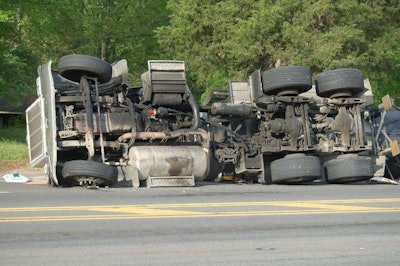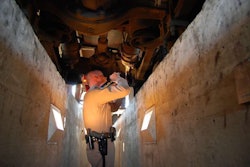
Bannister noted the large drop in crashes as a result of the recession, and said the continual improvements in the economy each year have brought about yearly growth in crash rates.
CCJ reported on some of the most recent figures from NHTSA in November — Click here to see them.
Nonetheless, Bannister pointed to certain agency efforts as effective in reducing crash rates.
In 2013, enforcers conducted 3.5 million inspections in the U.S., Bannister said, placing 21 percent of trucks inspected out-of-service and 5 percent of drivers. Per FMCSA peer-reviewed testing measures, this prevented 16,000 crashes and saved about 500 lives, he said.
The agency in 2013 also performed about 18,000 safety reviews of carriers and issued about 6,000 Notices of Claim, and 770 carriers were found to be Unsatisfactory or Unfit, Bannister said. These reviews prevented another 1,500 crashes and saved another 90 lives, he said.
To contend Bannister’s claims was Don Osterberg, Schneider National Senior Vice President and a member of MCSAC. The growth in the number of crashes since 2009 is an “inconvenient truth” for the agency, Osterberg said, “particularly in light of CSA” and other regulations done in the last 5 years.
Bannister, however, said crashes are down since 2005 and lots of study had been done on the economy’s relationship to crash rates, the latter of which he said are not to a level to where they were prior to 2009. “The rate of increase has tapered off. We expect that that will level off and continue to go down. But with the economic upturn we’re seeing more exposure, more opportunities” for crashes, he said.
FMCSA’s Larry Minor also pointed to a potential bright spot for the industry and FMCSA: More than 80 percent of New Entrants passed in 2013 — a number that’s been growing in about 10 percent increments since 2011.










